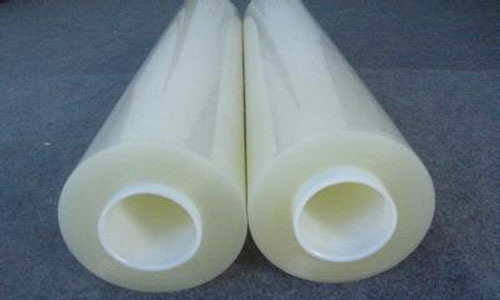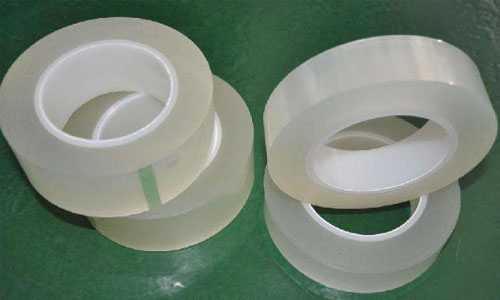OPP protective film is a plastic film made of OPP material, coated with acrylic adhesive on one side, and then attached to the release film (a single-layer non-adhesive film). OPP protective film is a commonly used material in the die-cutting industry and is widely used for surface protection during product transportation, such as plastic casings, keyboards, and other plastic components. Now let's take a detailed look at the OPP protective film die-cutting process and precautions.

Classification of OPP Protective Film:
OPP protective film includes computer protective film, screen protective film, laptop protective film, display protective film, laptop keyboard protective film, ultrasonic protective film, PE protective film, etc.
Characteristics of OPP Protective Film:
OPP protective film has a smooth and transparent surface, high temperature resistance, and good weather resistance. It is a very important flexible packaging material! OPP protective film is also a colorless, odorless, and non-toxic protective film, which has high tensile strength, impact strength, rigidity, toughness, and good transparency. The surface of OPP protective film needs to be corona treated before coating or printing.
After corona treatment, OPP film has good printing adaptability and can achieve exquisite appearance effects through color printing, making it a commonly used surface material for composite films. The thickness can be customized in 5C, 6C, and 7C, with low, medium, and high viscosity options.

Die-cutting Process for OPP Protective Film:
1. Machine preparation: Firstly, test the appearance, hardness, and flatness of the upper process, printing, and composite OPP protective film to see if they meet the cutting requirements.
2. Understand the condition and performance of the die-cutting equipment that will be used, and inspect the main operational components and electrical control parts of the equipment. Adjust the blades on the OPP protective film according to the user's specifications and start production according to the normal production process.
Issues to Note in Die-cutting Machine Operation:
The normal operation of the die-cutting machine is the foundation for ensuring production quality. After long-term high-speed operation, the operational accuracy of some important key components of each die-cutting machine will decrease, making it difficult to cut small-sized film rolls, resulting in inadequate cutting accuracy. As composite film belongs to polymer products and has a thin thickness, it is prone to damage during processing. Therefore, quality issues such as longitudinal stripes can easily occur on the film in the case of insufficient cutting accuracy. After years of observation and research, it has been proven that longitudinal stripes produced during the cutting process are the main quality issue in die-cutting and must be addressed.
During the normal production phase, the speed of the die-cutting machine should strictly follow the technical requirements. Excessive speed can also affect cutting quality. Therefore, by controlling the cutting speed, the required quality can be achieved. In order to increase production capacity and improve economic efficiency, some operators artificially increase the cutting speed, which leads to the occurrence of longitudinal stripes and cross-laminated quality issues when the film is running at high speed.
Therefore, it is necessary to adopt appropriate cutting techniques based on equipment performance, film internal properties, and different models and specifications of the film. As the process parameters, identification methods, and values for different films vary, careful adjustment of the process is required for each product. In production, different workstations of the slitting machine have different usage frequencies and degrees of wear, resulting in performance differences. For example, when cutting products with a well-maintained workstation, there will be fewer longitudinal stripes, while more will appear if the workstation is in poor condition. Therefore, each operator must pay attention to selecting the correct work position, fully utilizing the optimum condition of the equipment, understanding the on-site usage, continuously summarizing experience, and finding the best way to use the equipment.
In addition, it is important to note that during the cutting process, each roll must be reopened and rewound, which creates conditions for foreign matter to enter. Since thin film products are mainly used for food and drug packaging, strict hygiene requirements must be met, ensuring the cleanliness of each film roll. During the OPP protective film die-cutting process, various problems may arise. Apart from paying attention to operation, it is also necessary to choose good equipment. Only with high-quality rotary die-cutting machine equipment can more problems be avoided during the operation process. Selecting the right machine will save time, labor, and material during the die-cutting process.
Contact: Pamela
Phone: +86 189 6365 3253
E-mail: info@industryprocess.com
Whatsapp:+86 189 6365 3253
Add: Yajing Industrial Park, No. 59 Shuangjing Street, Weiting Town, Suzhou Industrial Park
We chat
